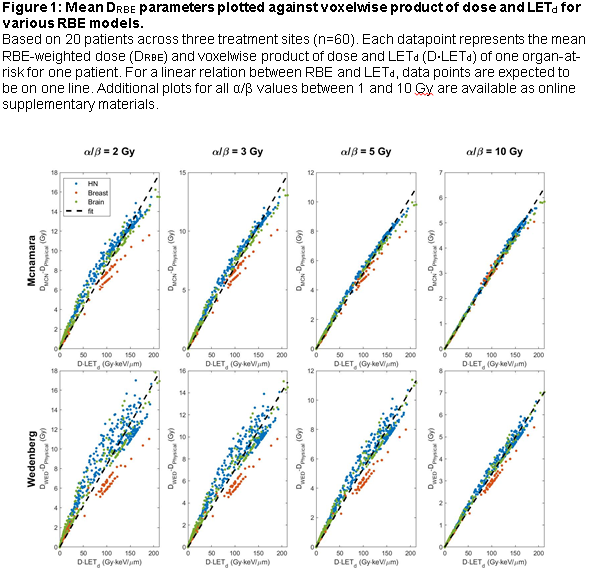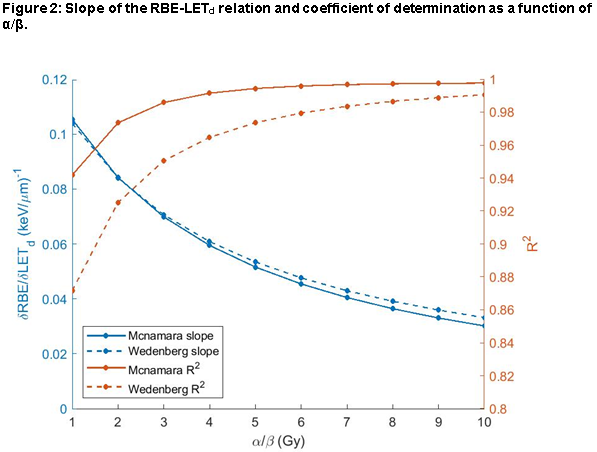Linear approximation of variable RBE models using only LET
PO-1747
Abstract
Linear approximation of variable RBE models using only LET
Authors: Dirk Wagenaar1, Johannes Langendijk1, Stefan Both1
1University Medical Center Groningen, Radiation Oncology, Groningen, The Netherlands
Show Affiliations
Hide Affiliations
Purpose or Objective
Variable
relative biological effectiveness (RBE) models based on the linear-quadratic
model for cell survival depend on the tissue-specific α/β value, fraction dose and the
dependence on the dose-weighted average linear energy transfer (LETd).
The relation between RBE-LETd is often proposed to be nonlinear, but
linearity is often implied in normal tissue complication probability (NTCP)
modelling and LETd optimization. In this study we aim to investigate
the linearity of the RBE-LET relation using two commonly used variable RBE
models.
Material and Methods
This study was conducted in three sets of 20 consecutive head & neck,
breast and brain cancer patients resulting in a total sample of 60 patients.
The RBE weighted dose (DRBE) was calculated for the Wedenberg (WED)
and McNamara (MCN) RBE models using an α/β
value between 1 and 10 Gy. A linear fit was made for each RBE model based on
the average DRBE and LETd to the target and all relevant
organs-at-risk (OARs). The DRBE for clinically relevant dosimetric
parameters was then calculated and compared using the WED and MCN models as
well as the linear fits of the RBE models.
Results
The average
DRBE parameters models plotted against the D⋅LETd are shown in figure 1 for selected α/β values. For the average DRBE
of OARs, the coefficient of determination (R2) was between 0.94 and
1.00 and between 0.87 and 0.99 for the
MCN and WED models respectively, with lower R2 values occurring for
low α/β values (figure 2). The R2 for an α/β of 2 Gy or higher was higher than 0.92
for both models. For clinically relevant dosimetric parameters, the mean
absolute error (MAE) between the WED and MCN model decreased with increasing α/β. The MAE
between the MCN model with an α/β of 2 Gy and its linear estimate was 1.57, 0.44
and 0.64 Gy for HNC, breast and brain patients, respectively. The MAE between
the MCN and WED model with an α/β of 2 Gy was 0.73, 0.22
and 0.32 Gy for HNC, breast and brain patients respectively. The MAE between an
RBE model and its linear fit was of a similar order of magnitude as the MAE
between two RBE models.
Conclusion
Both
considered RBE models are more linear for high α/β values which are typically observed
for acutely responding tissues and the MCN model was more linear than the WED
model. The linear fits to estimate mean DRBE
parameter generated good fits with high (>0.90) R2 values for α/β of 2 Gy and
very high (>0.95) for α/β of 3 Gy or higher. Using a linear RBE-LETd
relation does not clinically meaningfully contribute to the uncertainty of the DRBE
when considering clinically relevant dosimetric parameters.

